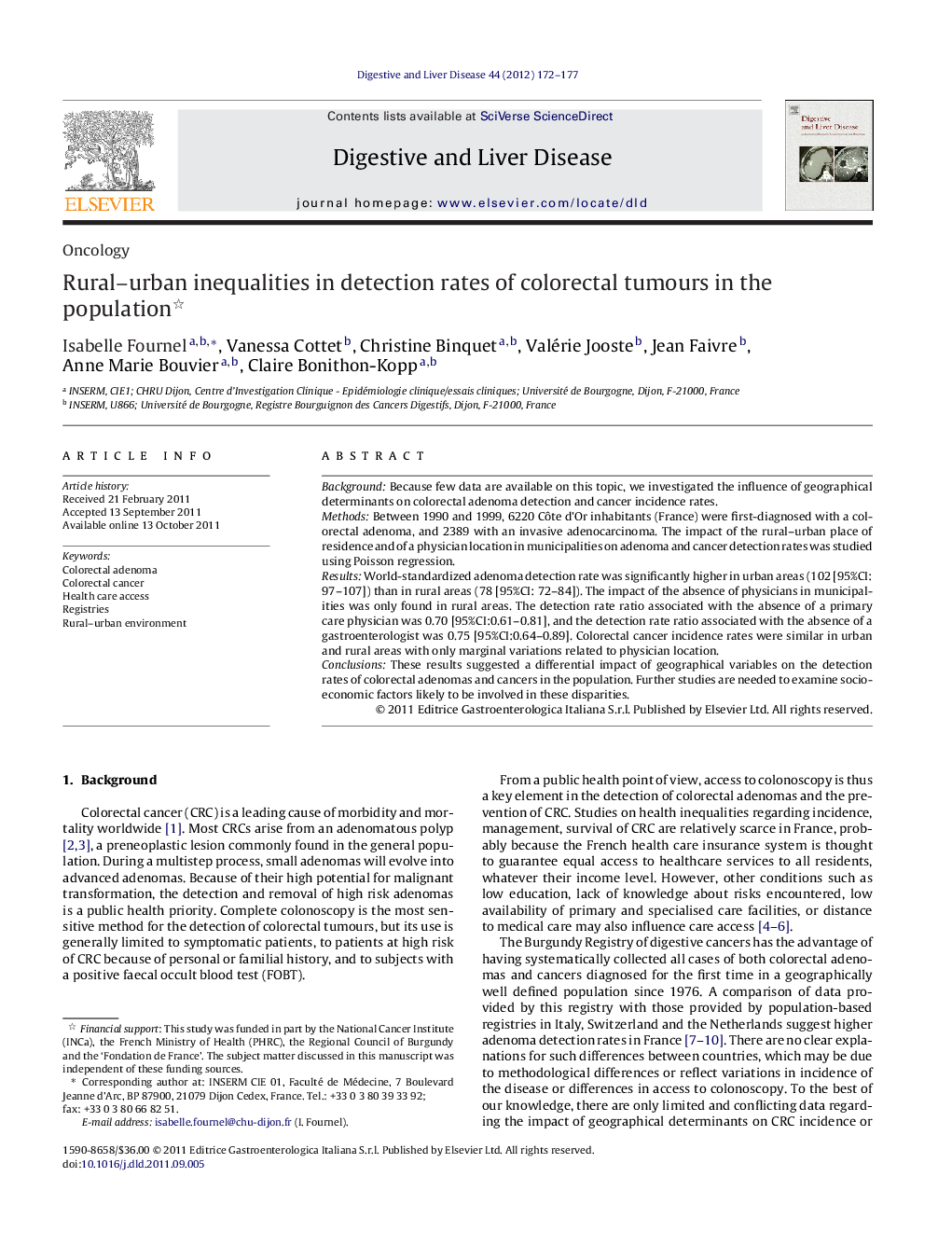| Article ID | Journal | Published Year | Pages | File Type |
|---|---|---|---|---|
| 3263228 | Digestive and Liver Disease | 2012 | 6 Pages |
BackgroundBecause few data are available on this topic, we investigated the influence of geographical determinants on colorectal adenoma detection and cancer incidence rates.MethodsBetween 1990 and 1999, 6220 Côte d’Or inhabitants (France) were first-diagnosed with a colorectal adenoma, and 2389 with an invasive adenocarcinoma. The impact of the rural–urban place of residence and of a physician location in municipalities on adenoma and cancer detection rates was studied using Poisson regression.ResultsWorld-standardized adenoma detection rate was significantly higher in urban areas (102 [95%CI: 97–107]) than in rural areas (78 [95%CI: 72–84]). The impact of the absence of physicians in municipalities was only found in rural areas. The detection rate ratio associated with the absence of a primary care physician was 0.70 [95%CI:0.61–0.81], and the detection rate ratio associated with the absence of a gastroenterologist was 0.75 [95%CI:0.64–0.89]. Colorectal cancer incidence rates were similar in urban and rural areas with only marginal variations related to physician location.ConclusionsThese results suggested a differential impact of geographical variables on the detection rates of colorectal adenomas and cancers in the population. Further studies are needed to examine socio-economic factors likely to be involved in these disparities.
